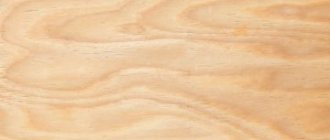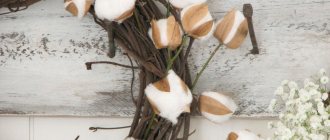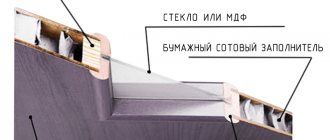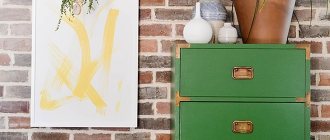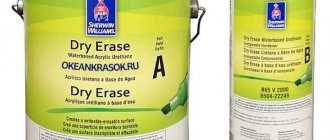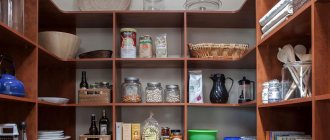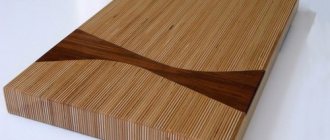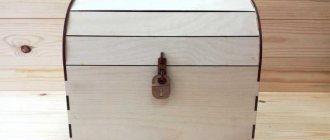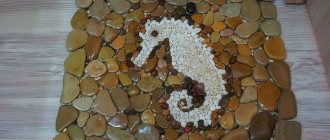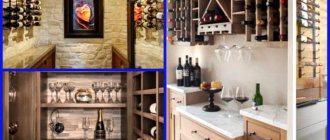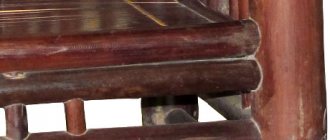Plywood is considered a popular material for decoration, as well as for furniture production. Demand for it is growing due to its low cost, and the material itself consists of several thin sheets of veneer glued together. When carrying out repair work, painting of plywood is often required: in order to do this efficiently, you need to familiarize yourself with the sequence of the procedure, as well as choose the right paint composition.
Painting plywood
Preparing the surface for painting
Plywood panels are an environmentally friendly and affordable material, so they can be used in any area for repairs. Before you paint plywood, you need to properly process it yourself. Then the adhesion of the material to the coating will improve, and the paint and varnish composition will lie beautifully and evenly.
Raw materials are often sold in this form in warehouses: they may or may not be polished. Depending on this, a list of preparatory work for painting is determined.
The entire technology for preparing a product for painting consists of processing the material: cleaning and sanding it, as well as priming and puttying.
Primer for plywood
Processing methods
To protect plywood from rapid deterioration, it must be protected from the harmful effects of an aggressive external environment. For this case, materials were used that can provide waterproofing and protect against wear and tear due to temperature changes.
How to treat plywood:
- Fiberglass fabrics.
- Varnish.
- Drying oil.
- Paint.
A separate nuance is that the ends of the plywood sheet are most susceptible to the harmful effects of moisture. They require particularly careful processing and additional insulation. To provide protection to such places, the following work is performed:
- Putty.
- Gluing the edges with metal or plastic edging.
- Treatment with deep penetrating primers.
- The use of thickly rubbed paints.
Important! Before choosing the plywood protective treatment option that suits you, familiarize yourself with the pros and cons of each material, its cost, and find out how simple the application technology is. Only then make your final decision.
Cleaning and sanding the material
When purchasing raw materials, you should pay attention to its texture: if it is very rough, the material must be cleaned and sanded. Before painting the plywood yourself, experts recommend drying it. Most likely, the sheets of material were sold from a warehouse, and it was often humid and damp there, so the wood could absorb some of the moisture. It is not possible to dry the product quickly, so the sheets of material are sent to a dry and warm place for 3 days.
With this tool you can sand small surfaces. If the sheets of material are large, it is better to use a power tool.
Once the plywood has dried, you can begin preparing it:
- Cleaning. This simple process is carried out to ensure that no large specks or contaminants remain on the surface of the raw material. Plywood can absorb moisture, so do not use water when cleaning. High-quality wood will always have a distinctive pattern - you also need to walk over it and check for contamination. Dirt must be removed using a coarse brush.
- Sanding. This procedure requires perseverance and care. Sanding consists of two stages: the first involves sanding with coarse-grain sandpaper, and the second with fine-grain sandpaper. The important thing here is to achieve not beauty, but a smooth surface. According to the advice of the masters, it is better to use a special grinding machine - this will speed up the work.
After passing coarse grain across the surface, it is necessary to change the nozzle to paper with fine dispersion. This procedure can easily be carried out manually, but it will take more time. Don't forget about the edges of the product - they also need to be cleaned and sanded.
Varnishing plywood
Recommendations for varnishing
When starting to process the canvas, you should take into account some nuances. To get a good result and avoid unpleasant consequences, you need to:
The composition should be applied evenly in the direction of the wood fibers
- when painting plywood with acrylic paint indoors, cover furniture and floors that cannot be treated with polyethylene;
- choose a suitable putty to match the pigment used;
- apply the composition evenly along the wooden fibers;
- do not allow the formation of too thick a layer of pigment, which leads to the appearance of smudges;
- apply the composition in two layers if you need to create a rich shade;
- Use masking tape when combining different colors.
Surface priming and puttying
The next two stages of preparing plywood for paint treatment are priming and puttying. It is necessary to paint plywood with a primer in order to fill all existing voids on the surface: this will prevent further cracking of the material. Before applying the composition, degreasing is carried out so that no extra pieces of wood remain on the material. It is necessary to prime the plywood in 3-4 layers. When further painting it in a transparent color, the craftsmen recommend additionally applying several layers of antiseptic and fire retardant on top of the primer - they will protect the product from fire and prevent it from turning blue.
Priming can be done using a small brush and a pre-selected primer material.
It is necessary to cover the plywood with a new layer of primer only after the previous layer has completely dried. This work may take several days. When the priming procedures are completed, it is recommended to thoroughly dry the material again. The correct technology for preparing for painting contains one more step - puttying. Plywood especially needs additional protection, and it is the putty that will protect the coating from mechanical damage in the future.
Sanding plywood
The process looks like this:
- White acrylic putty is used for work. Due to the fact that plywood is often used to level various types of surfaces (floor, ceiling or walls), mechanical protection will not be superfluous. It is the acrylic base that makes the plywood moisture resistant, which makes it possible to use it in damp rooms by attaching it to a slatted frame.
- Tools and application. To work you need a spatula and a rule. The putty is applied in small strokes, after which the layer is usually leveled. The optimal coating thickness is 2-3 mm, with special attention should be paid to joints and recesses.
At the priming stage, before filling, you can apply a stain to the surface of the material - this will also additionally protect it.
Spray painting
Creation of various decorative coatings
Interior items are painted antique in loft style:
- After covering the base with primer and sanding, black dye is applied.
- The dried surface is treated with a second layer - light CM.
- The dried decorative coating is processed with coarse sandpaper.
- Varnishing is in progress.
Veranda, bathroom, covered with sheets, are additionally treated with antibacterial agents. After this, waterproof plywood paint is applied.
Beautiful tabletops are created: a pattern is applied to the painted base and varnished; Using an old bristle brush, an imitation of marble, plastic, or metal is created on the surface of the shield.
Choosing paint or varnish for plywood
When choosing what to paint plywood for decoration or finishing, it is recommended to pay attention to the subsequent conditions of its use. If the material will be used outdoors, it is better to choose oil-based compounds and waterproof varnish. When using the material indoors, acrylic or water-based paint is suitable. Depending on the final result, you can use either an aerosol can or a spray gun. If you need to make an inscription, then an airbrush is good.
Some tips for choosing paint:
- You can use oil-based enamel to paint external plywood slabs (this option is suitable for a summer house);
- Water-based paint can be used to cover the outside of houses, and this option can also be used to decorate furniture, since the composition is odorless;
- acrylic composition is good for painting plywood toys, children's crafts, doll houses, as well as decorating items for the interior;
- enamels, for example, PF-115, are made on the basis of pentaphthalic varnish; they are suitable for plywood that will be used in places with frequent temperature changes.
Coating the material with varnish is one of the most important steps in preventing mechanical damage.
The choice of varnish also has its secrets. For example, if you want to paint laminated plywood, giving it a wooden texture, powder dye is poured into the varnish: when applied to the surface, an interesting pattern is created. Transparent gloss varnish is best used when you plan to decorate plywood while maintaining the original appearance. The enamel composition must be used when the product is planned to be used continuously.
Correct coloring of plywood
When calculating how long it will take to complete the entire process of working with plywood, it is also worth considering its markings. When purchasing, it is worth checking the letter assigned to the material and its grade - this will help to avoid large amounts of time spent on preparation.
Extending the service life of plywood structures
A few more tips for increasing the life of plywood will help you save money on unexpected repairs in the future:
- If the plywood sheet will be installed outside the building, try to place it under a canopy.
- Cover structures made of plywood with other finishing materials, especially if it is located on the street.
- Install sheets on vertical surfaces also vertically.
- The most vulnerable places on plywood are the fastening areas. Therefore, all areas near screws and nails must be treated especially carefully.
- If you find many small cracks on the surface of the plywood covering, this means that it requires urgent action. You should not paint over cracks without pre-treatment. First, use sandpaper to remove all flaking elements, and then restore the protective coating with varnish or paint.
Little secrets
You can paint laminated plywood to imitate wood. How to do it? The simplest option: pour dark brown and beige powder dye into the varnish, but do not stir until smooth. When applied to a plywood sheet, this mixture will create an imitation of wood. It is possible to use other combinations of light and dark.
When you need to apply several different colors, it is advisable to paint the surface with one color, and after drying, apply the design, sealing the areas not intended for painting with masking tape. To add shine and additional strength, it is recommended to apply varnish after the paint has dried.
These simple recommendations will help you decide how and with what to paint plywood inside and outside the house.
Questions
How to paint plywood inside a house?
For interior decoration, various water-based paints are used - acrylic, latex. You can paint the canvas with wood enamel, otherwise called pentaphthalic. The composition is easy to apply, penetrates well between the fibers, and dries instantly.
What paints can you use to paint on plywood?
The wood canvas holds oil and acrylic compositions well, even gouache and watercolor. The sheet must be at least 6 mm thick. The surface must first be primed or impregnated with drying oil similar to oil.
Painting on the surface
How to paint plywood white?
To obtain a high-quality white surface without visible minor defects, matte paint is required. Glossy compounds are less able to hide flaws in the base. Before work, you also need to carefully prepare the surface.
How to paint plywood on the floor?
Elastic paint is well suited for finishing flooring. This composition has a rubber-like structure, a shiny appearance, and is resistant to ultraviolet radiation. The pigment forms a thin film, hides minor flaws, and conceals unevenness.
How to paint plywood against moisture?
The easiest way to protect the surface from moisture is to impregnate the sheet with drying oil or acrylic varnish. Another effective, but more expensive option is to paint the canvas with epoxy resin.
